
I'VE SEEN MANY BUDGERIGARS IN my life but never, until recently, in the wild. They'd be in cages in shops, sold as low-maintenance but lively pets. Budgies are, in fact, the most popular pet bird in the world.
But you can also find these vibrant little parrots in the wild. Budgerigars (Melopsittacus undulatus) are true Australian natives, travelling in vast flocks across much of the country's interior, bringing a splash of colour and a healthy dose of noise to the rugged desert outback.
I've always been intrigued by wild budgies, as has my husband, Juergen (Yogi). Yet remarkably, despite the fact that Yogi has been a wildlife photographer for three decades, and that we've been living in Far North Queensland for two, an opportunity to photograph the species has never arisen. These avian wonders, described by ornithologist John Gould in 1800 as the epitome of liveliness and cheerfulness, had always somehow eluded our cameras. That impasse finally ended in June 2022. Mapping out a wobbly path that would take us across three states, we made it our mission to find and finally photograph the all-Australian parrot. The seeds of our journey had been sown two years earlier, when a triple La Niña event (see box on p71) brought record rainfall to areas of the south-east.
Australia is a boom-and-bust continent, and nowhere is this more evident than in the outback. This remote wilderness can endure as many as 20 years of drought and heat, which can trigger catastrophic bush fires and ferocious dust storms, followed by shorter, wetter spells - as was the case from 2020-2022 when, finally drenched by the all-nourishing rain, the outback burst into bloom. The weather also brought another gift: enormous flocks of budgies.
Esta historia es de la edición October 2023 de BBC Wildlife.
Comience su prueba gratuita de Magzter GOLD de 7 días para acceder a miles de historias premium seleccionadas y a más de 9,000 revistas y periódicos.
Ya eres suscriptor ? Conectar
Esta historia es de la edición October 2023 de BBC Wildlife.
Comience su prueba gratuita de Magzter GOLD de 7 días para acceder a miles de historias premium seleccionadas y a más de 9,000 revistas y periódicos.
Ya eres suscriptor? Conectar
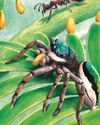
Jump Around - Bagheera Kiplingi - The acrobatic spider with a predilection for veggie food
Spiders eat flies, right? everyone knows that the 45,000 or so spiders in the world are all obligate carnivores, more or less – eating other animals, mainly invertebrates. Nature, however, loves an exception, and one particular spider missed out on that ecological memo. It goes by the wonderful scientific name of Bagheera kiplingi, and its claim to fame is that its diet is – at least mostly – vegetarian.
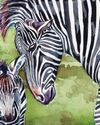
Female of the Species - Zebras - A strong sisterhood is key to staying safe
Zebras are masters of confusion. Their collective noun is ‘a dazzle’, which is fitting since their bodies and behaviour have been surprising scientists for centuries.
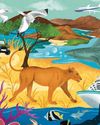
See It, Save It? - Wildlife tourism can be a powerful ally in protecting nature - but it can also harm it. We weigh up the pros and cons.
The sums of wildlife travel aren’t as simple as more tourists equals happier nature. How much did my visit really contribute to the conservation of Lady Liuwa and her habitat – and was that outweighed by carbon emissions from my flights? Did my presence disturb the animals’ natural behaviour more than it reduced the threat of poaching or benefited local communities?The question of whether wildlife travel is, on balance, good for wildlife is a complex one – and there’s no simple answer.

Can Your Really Offset Emissions? - Planning an overseas wildlife-watching trip entails facing some inconvenient truths
Imagine (or maybe you don't need to) that you hanker after the safari trip of a lifetime in sub-Saharan Africa. A 17-day tour beginning at the iconic Victoria Falls, passing through Zimbabwe, Zambia, Malawi and Tanzania, taking in some of the continent’s most wildlife-rich national parks, and ending on the lush island of Zanzibar.

Metamorphosis: a life-changing event
WITH EVOLUTIONARY BIOLOGIST JV CHAMARY
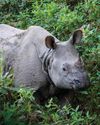
New series for BBC One: Asia
Settle in this autumn for a new natural-history extravaganza on BBC One and iPlayer: the longawaited Asia, presented by Sir David Attenborough.
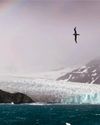
Loss of Antarctic sea ice could impact seabird food supply
Albatrosses and petrels may be forced to fly further to feed
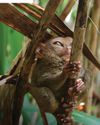
Tarsiers in trouble
Urgent action is needed to ensure survival of the Yoda-like primate

SNAP-CHAT
Chien Lee on shrew loos, rogue drones and being rained out of bed
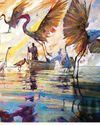
VISIONS OF NATURE
The winners of the Wildlife Artist of the Year competition 2024, from David Shepherd Wildlife Foundation